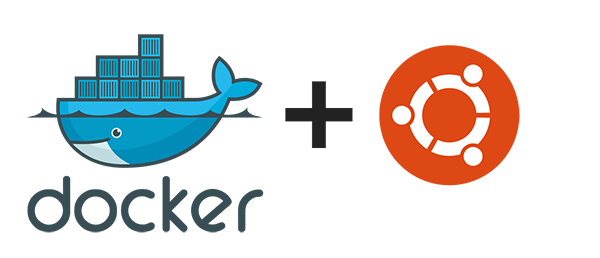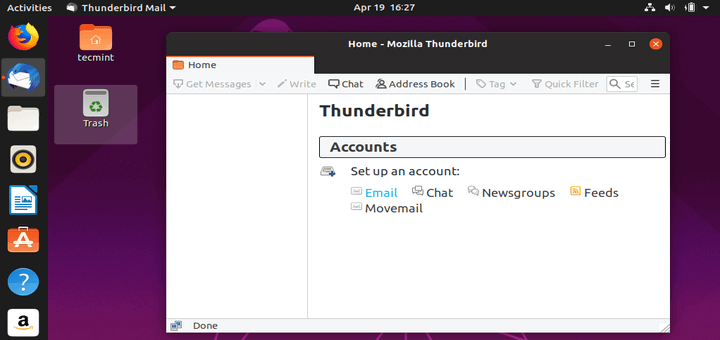Estimated reading time: 9 minutes
Does Docker run on Linux, macOS, and Windows?
You can run both Linux and Windows programs and executables in Docker containers. The Docker platform runs natively on Linux (on x86-64, ARM and many other CPU architectures) and on Windows (x86-64).
# # This script is meant for quick & easy install via: # $ curl -fsSL -o get-docker.sh # $ sh get-docker.sh # # For test builds (ie. Release candidates): # $ curl -fsSL -o test-docker.sh # $ sh test-docker.sh # # NOTE: Make sure to verify the contents of the script # you downloaded matches the. # # This script is meant for quick & easy install via: # $ curl -fsSL -o get-docker.sh # $ sh get-docker.sh # # For test builds (ie. Release candidates): # $ curl -fsSL -o test-docker.sh # $ sh test-docker.sh # # NOTE: Make sure to verify the contents of the script # you downloaded matches the. @Mixel's answer worked great for the Ubuntu-based docker image we have. However, we also have a centos-based docker image for testing recipes via chef (using the kitchen-docker driver). One of the packages we pre-install was failing to install due to no locale being set. In order to get a locale installed, I had to run the following.
Docker Inc. builds products that let you build and run containers on Linux, Windows and macOS.
What does Docker technology add to just plain LXC?
Docker technology is not a replacement for LXC. “LXC” refers to capabilities ofthe Linux kernel (specifically namespaces and control groups) which allowsandboxing processes from one another, and controlling their resourceallocations. On top of this low-level foundation of kernel features, Dockeroffers a high-level tool with several powerful functionalities:
Portable deployment across machines. Docker defines a format for bundling an application and all its dependencies into a single object called a container. This container can be transferred to any Docker-enabled machine. The container can be executed there with the guarantee that the execution environment exposed to the application is the same in development, testing, and production. LXC implements process sandboxing, which is an important pre-requisite for portable deployment, but is not sufficient for portable deployment. If you sent me a copy of your application installed in a custom LXC configuration, it would almost certainly not run on my machine the way it does on yours. The app you sent me is tied to your machine’s specific configuration: networking, storage, logging, etc. Docker defines an abstraction for these machine-specific settings. The exact same Docker container can run - unchanged - on many different machines, with many different configurations.
Application-centric. Docker is optimized for the deployment of applications, as opposed to machines. This is reflected in its API, user interface, design philosophy and documentation. By contrast, the
lxchelper scripts focus on containers as lightweight machines - basically servers that boot faster and need less RAM. We think there’s more to containers than just that.Automatic build. Docker includes a tool for developers to automatically assemble a container from their source code, with full control over application dependencies, build tools, packaging etc. They are free to use
make,maven,chef,puppet,salt,Debian packages, RPMs, source tarballs, or any combination of the above, regardless of the configuration of the machines.Versioning. Docker includes git-like capabilities for tracking successive versions of a container, inspecting the diff between versions, committing new versions, rolling back etc. The history also includes how a container was assembled and by whom, so you get full traceability from the production server all the way back to the upstream developer. Docker also implements incremental uploads and downloads, similar to
git pull, so new versions of a container can be transferred by only sending diffs.Component re-use. Any container can be used as a parent image tocreate more specialized components. This can be done manually or as part of anautomated build. For example you can prepare the ideal Python environment, anduse it as a base for 10 different applications. Your ideal PostgreSQL setup canbe re-used for all your future projects. And so on.
Sharing. Docker has access to a public registry on DockerHub where thousands ofpeople have uploaded useful images: anything from Redis, CouchDB, PostgreSQL toIRC bouncers to Rails app servers to Hadoop to base images for various Linuxdistros. The registry also includes an official “standardlibrary” of useful containers maintained by the Docker team. The registry itselfis open-source, so anyone can deploy their own registry to store and transferprivate containers, for internal server deployments for example.
Tool ecosystem. Docker defines an API for automating and customizing the creation and deployment of containers. There are a huge number of tools integrating with Docker to extend its capabilities. PaaS-like deployment (Dokku, Deis, Flynn), multi-node orchestration (Maestro, Salt, Mesos, Openstack Nova), management dashboards (docker-ui, Openstack Horizon, Shipyard), configuration management (Chef, Puppet), continuous integration (Jenkins, Strider, Travis), etc. Docker is rapidly establishing itself as the standard for container-based tooling.
What is different between a Docker container and a VM?

There’s a great StackOverflow answer showing the differences.
Do I lose my data when the container exits?
Not at all! Any data that your application writes to disk gets preserved in itscontainer until you explicitly delete the container. The file system for thecontainer persists even after the container halts.
How far do Docker containers scale?
Some of the largest server farms in the world today are based on containers.Large web deployments like Google and Twitter, and platform providers such asHeroku run on container technology, at a scale of hundreds ofthousands or even millions of containers.
How do I connect Docker containers?
Currently the recommended way to connect containers is via the Docker networkfeature. You can see details of how to work with Docker networks.
How do I run more than one process in a Docker container?
This approach is discouraged for most use cases. For maximum efficiency andisolation, each container should address one specific area of concern. However,if you need to run multiple services within a single container, seeRun multiple services in a container.
How do I report a security issue with Docker?
You can learn about the project’s security policyhere and report security issues to thismailbox.
Why do I need to sign my commits to Docker with the DCO?
Read our blog post on the introduction of the DCO.
When building an image, should I prefer system libraries or bundled ones?
This is a summary of a discussion on the docker-dev mailing list.
Debian Upgrade
Virtually all programs depend on third-party libraries. Most frequently, theyuse dynamic linking and some kind of package dependency, so that whenmultiple programs need the same library, it is installed only once.
Some programs, however, bundle their third-party libraries, because theyrely on very specific versions of those libraries.

When creating a Docker image, is it better to use the bundled libraries, orshould you build those programs so that they use the default system librariesinstead?
The key point about system libraries is not about saving disk or memory space.It is about security. All major distributions handle security seriously, byhaving dedicated security teams, following up closely with publishedvulnerabilities, and disclosing advisories themselves. (Look at the DebianSecurity Informationfor an example of those procedures.) Upstream developers, however, do not alwaysimplement similar practices.
Before setting up a Docker image to compile a program from source, if you wantto use bundled libraries, you should check if the upstream authors provide aconvenient way to announce security vulnerabilities, and if they update theirbundled libraries in a timely manner. If they don’t, you are exposing yourself(and the users of your image) to security vulnerabilities.
Debian Update Docker Command
Likewise, before using packages built by others, you should check if thechannels providing those packages implement similar security best practices.Downloading and installing an “all-in-one” .deb or .rpm sounds great at first,except if you have no way to figure out that it contains a copy of the OpenSSLlibrary vulnerable to the Heartbleed bug.
Why is DEBIAN_FRONTEND=noninteractive discouraged in Dockerfiles?
When building Docker images on Debian and Ubuntu you may have seen errors like:


These errors don’t stop the image from being built but inform you that theinstallation process tried to open a dialog box, but couldn’t. Generally,these errors are safe to ignore.
Some people circumvent these errors by changing the DEBIAN_FRONTENDenvironment variable inside the Dockerfile using:
This prevents the installer from opening dialog boxes during installation whichstops the errors.

While this may sound like a good idea, it may have side effects. TheDEBIAN_FRONTEND environment variable is inherited by all images andcontainers built from your image, effectively changing their behavior. Peopleusing those images run into problems when installing softwareinteractively, because installers do not show any dialog boxes.
Because of this, and because setting DEBIAN_FRONTEND to noninteractive ismainly a ‘cosmetic’ change, we discourage changing it.
If you really need to change its setting, make sure to change it back to itsdefault valueafterwards.
Why do I get Connection reset by peer when making a request to a service running in a container?
Typically, this message is returned if the service is already bound to yourlocalhost. As a result, requests coming to the container from outside aredropped. To correct this problem, change the service’s configuration on yourlocalhost so that the service accepts requests from all IPs. If you aren’t surehow to do this, check the documentation for your OS.
Why do I get Cannot connect to the Docker daemon. Is the docker daemon running on this host? when using docker-machine?
This error points out that the docker client cannot connect to the virtualmachine. This means that either the virtual machine that works underneathdocker-machine is not running or that the client doesn’t correctly point atit.
To verify that the docker machine is running you can use the docker-machine lscommand and start it with docker-machine start if needed.
You need to tell Docker to talk to that machine. You can do this with thedocker-machine env command. For example,
Where can I find more answers?
You can find more answers on:
faq, questions, documentation, docker